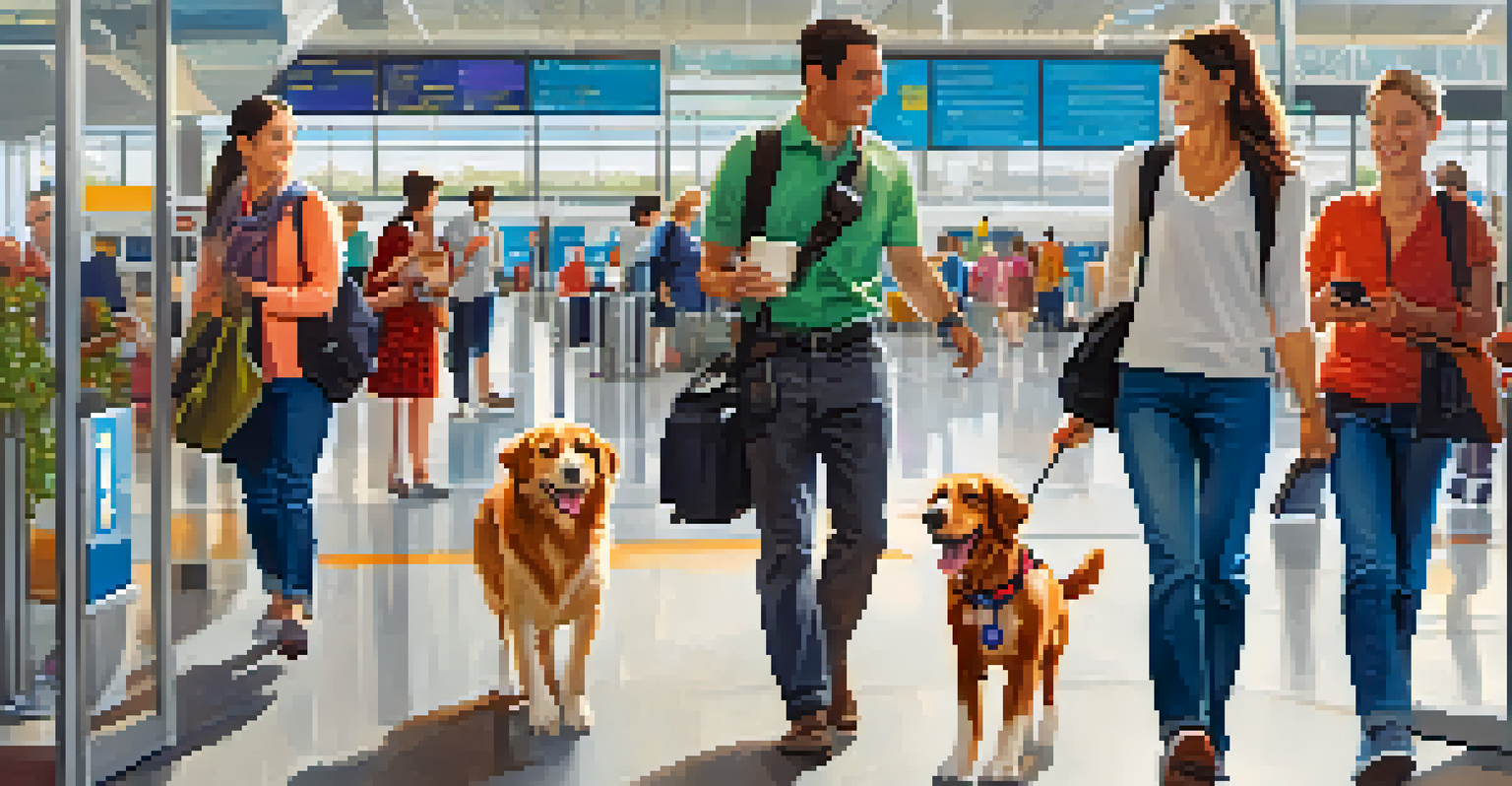How to Update Pet Identification for Traveling

Importance of Accurate Pet Identification While Traveling
When traveling with your pet, having accurate identification is crucial. It ensures that your furry friend can be easily returned to you if they get lost. Imagine the peace of mind you'll feel knowing that your pet's information is up-to-date.
The greatness of a nation and its moral progress can be judged by the way its animals are treated.
Proper identification also prevents potential stress for both you and your pet. In unfamiliar environments, pets can easily become disoriented. By having the correct tags and microchip information, you can help facilitate a faster reunion.
Lastly, many travel destinations require proof of pet identity. Whether you’re crossing state lines or international borders, having updated identification may be a legal necessity, ensuring you and your pet can enjoy your trip without hitches.
Check and Update ID Tags Before Your Trip
The first step in updating your pet's identification is to check their ID tags. Look for any signs of wear and tear, as an old tag might be hard to read. If the information is faded or incorrect, it’s time for a replacement.

Make sure the tags include your pet's name, your current phone number, and any relevant medical information. This way, if someone finds your pet, they’ll know how to contact you quickly.
Accurate ID is Crucial for Travel
Having up-to-date identification ensures your pet can be quickly returned if lost during your travels.
Additionally, consider adding an emergency contact number or an alternate method of communication, like an email address. This extra layer of information can be incredibly useful in case you’re unreachable.
Consider Microchipping for Added Security
Microchipping is a fantastic way to enhance your pet's identification. A microchip is a small device implanted under your pet's skin, containing a unique ID number linked to your contact details. If your pet goes missing, shelters and vets can scan the chip to retrieve your information.
Dogs are not our whole life, but they make our lives whole.
It's a permanent solution that doesn't wear out like tags can. Even if your pet loses their collar, the microchip remains as a reliable form of identification.
Before traveling, ensure your microchip details are up to date. Contact the microchip registry to verify that your information is current and accurate, providing an extra layer of security during your travels.
Prepare a Pet Travel Kit with ID Information
Creating a pet travel kit is a great way to keep all identification information organized. Include copies of your pet’s ID tags, microchip registration, and vaccination records in this kit. This way, you have everything handy should any situation arise.
You can also add a recent photo of your pet to the kit. In the unfortunate event they go missing, having a photo on hand can help others recognize your pet quickly.
Microchipping Adds Security
Microchipping provides a permanent form of identification that remains effective even if your pet loses their collar.
Make sure to keep this kit in an easily accessible location while traveling. Whether it's in your suitcase or a designated spot in your car, having quick access to this information can save valuable time.
Research Pet Regulations for Your Destination
Before embarking on your journey, it's crucial to research the pet regulations of your destination. Different places have various laws regarding pet identification, and being unprepared can lead to complications. For example, some countries may require specific vaccinations or identification forms.
Check if there are any breed restrictions or special permits needed for your pet. Familiarizing yourself with these regulations can help you avoid fines or difficulties upon arrival.
By understanding the requirements ahead of time, you can ensure that your pet travels safely and legally, allowing you to enjoy your trip without added stress.
Utilize Technology for Pet Tracking
In today’s digital age, using technology for pet tracking has become increasingly popular. GPS collars and pet tracking devices can provide real-time location information, giving you peace of mind. If your pet wanders off, you can quickly track their movements.
These devices often come with mobile apps that allow you to set safe zones and receive alerts if your pet strays beyond them. This feature can be especially useful in busy travel settings like airports or parks.
Research Local Pet Regulations
Understanding pet regulations at your destination helps prevent complications and ensures a smooth travel experience.
However, remember that technology can sometimes fail, so it should complement traditional identification methods rather than replace them. Combining both can maximize your pet's safety while traveling.
Stay Vigilant: Monitor Your Pet's Well-Being
While traveling, it’s essential to monitor your pet’s well-being closely. Changes in environment can be stressful for pets, and keeping an eye on their behavior can prevent potential issues. Look out for signs of anxiety or distress, such as excessive barking or hiding.
Regular breaks during travel can also help alleviate stress. Allowing your pet to stretch their legs and relieve themselves can make the journey more enjoyable for everyone involved.

Lastly, remember to keep your pet hydrated and fed according to their schedule. A happy and healthy pet is less likely to wander off, ensuring that your travels are as smooth as possible.